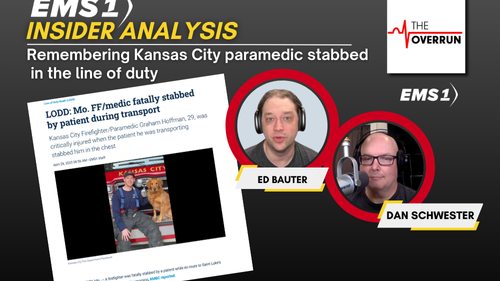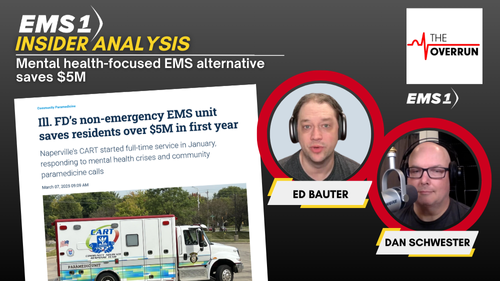EMS News
Need the most up-to-date news on prehospital field operations, staffing, training, management and provider safety? Catch up on the latest industry news on EMS1.
Rock Hill first responders teamed up with the community to collect enough cereal for tens of thousands of servings during the Healthy Over Hungry Cereal Drive
The 2024 Public-Release Research Dataset is the largest of its kind, featuring over 60 million EMS activations nationwide
San Francisco firefighters rescued a young man who fell from a 13-story building onto an awning
The “She Drives Act,” would require the NHTSA to include advanced female dummies, aiming to close a safety gap in how cars are rated and approved
Wellness programs are expanding as dispatch centers race to adopt artificial intelligence, new tech tools and stronger retention models
With more than 60 open paramedic and EMT positions, the city is piloting telemedicine and nurse diversion programs while preparing a new recruitment push
A department review found paramedics and EMTs followed recommended chest pain procedures in just 13.2% of cases
Chief Robert Perko says delayed 911 calls and lack of oversight among volunteer responders have led to communication breakdowns and risk to patient care
TRENDING NEWS
COLUMNISTS & EXPERTS
After a Connecticut EMT abducted a colleague twice, calls intensify for background checks and systemic hiring reforms in EMS
A new congressional bill aims to classify cross-trained EMS personnel federally, but will it be enough?
Stretcher fall underscores the importance of foundational skills after alleged mishap in New Jersey
Graham Hoffman’s death underscores the unpredictable risks and the need for stronger safety measures in EMS
The heartbreaking death of a Kansas City FF/paramedic reminds us that every shift carries unseen dangers
Naperville’s CART program showcases savings and patient-centered care, diverts hundreds from ED
PRODUCT NEWS
This industry-leading designation highlights Braun’s unwavering dedication to quality, innovation, and customer-focused manufacturing excellence
GundersenAIR has adopted Hinckley Medical’s OneDose system, strengthening support for flight workflows and improving overall system operations
Commercial vehicle and specialty manufacturing leader expands into emergency vehicle market with addition of one of North America’s leading brand portfolios with a global sales track record





















